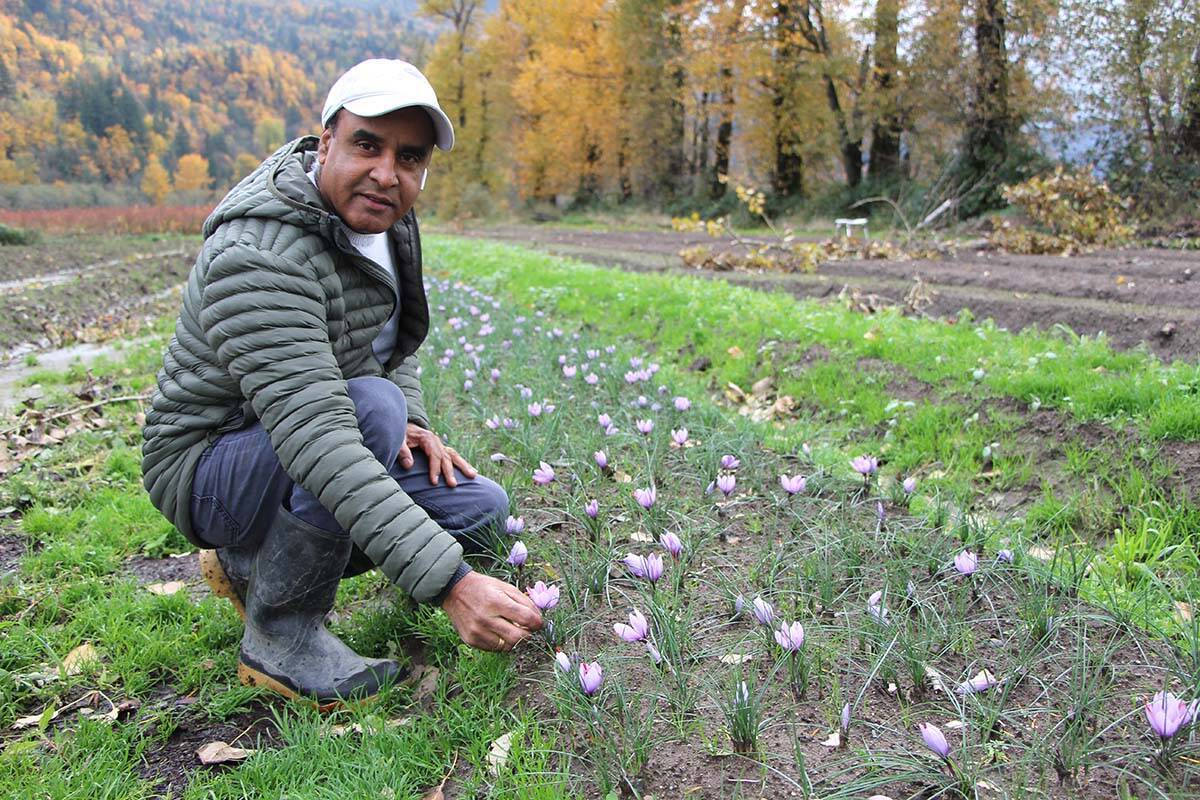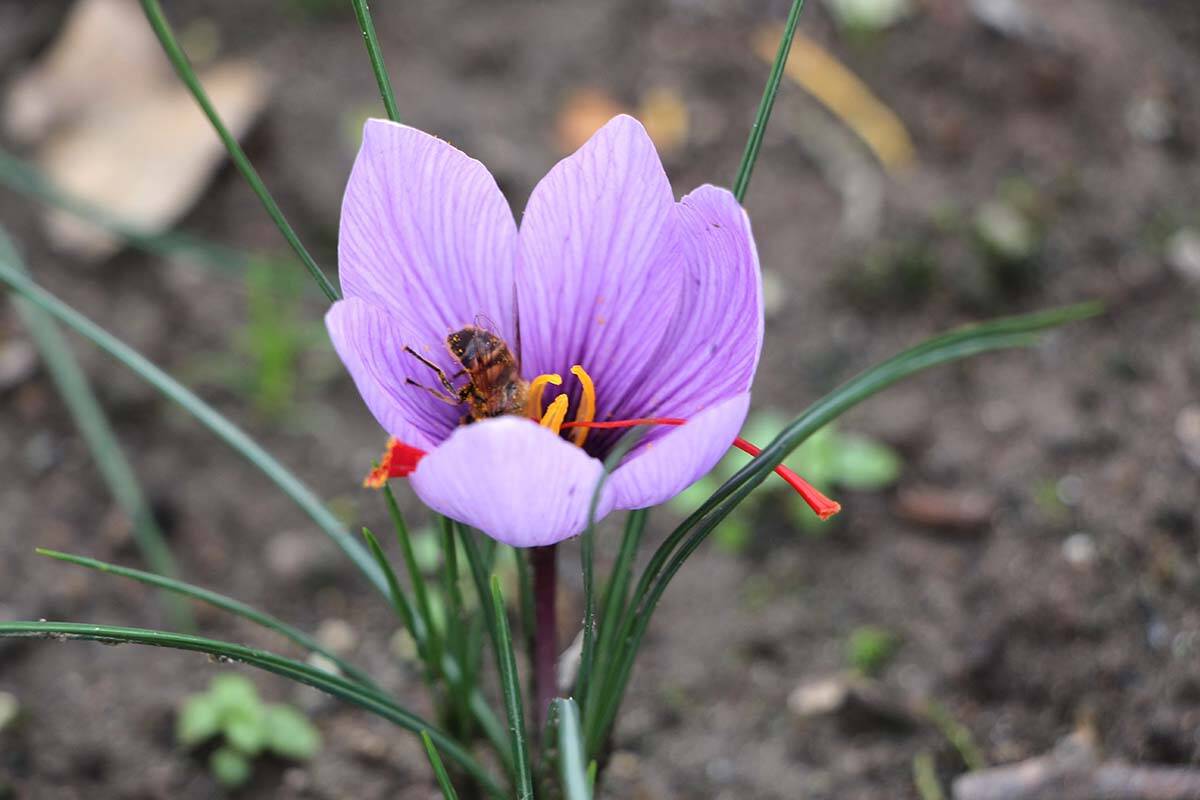An Abbotsford farm has become the first in the Fraser Valley – and one of a handful in Canada – to grow and sell the flower that produces the world’s most expensive spice.
Avtar Dhillon has discovered that the Fraser Valley’s rainy climate and rich soil is ideal for growing saffron, a crop normally associated with arid regions.
The ancient spice – used in cooking, as a colouring agent and in pharmaceuticals – comes from the autumn-flowering perennial plant known as Crocus sativus (the “saffron crocus”).
Some 90 per cent of the world’s total comes from Iran, and it is also produced in places such as Spain, Greece, Italy, India and Afghanistan.
Dhillon says the spice is worth about $35,000 per kilogram, mainly due to the intensive manual labour required to harvest and cure the flowers.
He and his twin brother Jagtar have been operating the 25-acre Ramsar Berry Farm in east Abbotsford near the Chilliwack border since 2006.
But costs paid by processors for their blueberries have dropped over the years, and the pair began looking at other crops that could be grown during the off-season.
ALSO SEE: Abbotsford Community Foundation awards $160K in agriculture grants
Saffron was among the options that Dhillon researched, and he discovered that a farm in Montreal was having some success with the plants.
Dhillon purchased some bulbs from India – they cost $1.50 each – and began experimenting with different growing methods about five years ago.
This included in a greenhouse, with mushroom manure, and at different times of the year.
Dhillon found that the best-producing crop was grown in the same field as his blueberries, starting from August and well into the rainy season. This year is the farm’s first crop, and Dhillon says the quality is among the best in the world.
The bulbs were planted during their dormancy period when the weather was dry, but have since thrived in the damp climate.
Dhillon was surprised to find that each bulb produced not just one flower, but five or six.
He said he wasn’t the only one astonished to have such success with the flowers in B.C.’s dreary fall climate.
“Nobody believes it … Some people say, ‘You are kidding.’ I say, ‘I will show you pictures.’ ”
Harvesting of the purple flowers began at the end of October and will continue until the end of November.
From each hand-picked flower, the three inside crimson stigmas – called threads – are removed.
Dhillon’s family is instrumental in the process. He and his brother are both married with five teenage children between them. They all live together, and gather to harvest the flowers and separate the threads.
“Our kids, they come here and they have fun. All of our family sits at the dining table, and we talk and make saffron,” he said.
The threads are then dried in the open air for a couple of days and stored in an airtight container, where Dhillon says the saffron can last for years.
ALSO SEE: BC plans to phase out mink farming industry by 2025
The product can be sold in thread form or as a powder. He is currently selling it for $50 per gram, which requires the stigmas from about 400 flowers.
He hopes to eventually have five acres of the farm devoted to saffron growing.
Dhillon wants consumers to be wary of fake saffron being sold on the market. Fraudsters can alter the appearance of other items, such as corn silk threads or horse hair, and sell it as saffron.
Real saffron, when a tiny piece is immersed in warm water or milk, will take about 10 to 15 minutes to change the colour of the liquid. Fake saffron will colour it immediately.
Dhillon advises buying directly from a trusted and/or local producer.
FACTS ABOUT SAFFRON
• 225,000 stigmas are required to produce one pound (.45 kg) of saffron.
• All harvesting must be done by hand.
• The saffron flower is a perennial plant, meaning it blossoms every year (in the autumn).
• Saffron is an excellent source of minerals like copper, potassium, calcium, manganese, iron, selenium, zinc and magnesium.
• It is used to colour and flavour many Mediterranean and Asian dishes, particularly rice and fish, giving a yellow-orange colouring to foods.
• The ancient Greeks and Romans used saffron as a perfume.
vhopes@abbynews.com
Like us on Facebook and follow us on Twitter




